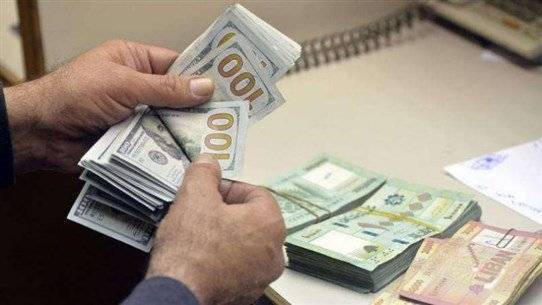The allure of the customs dollar has backfired on the government, with a clear retreat from its adoption by the Ministry of Finance, which has been urged by the Prime Minister's office to proceed with the project of the decree returned from the presidency. This decree aims to raise the collection rate 13 times, reaching 20,000 Lebanese Lira for each dollar in order to calculate the value of goods that must be declared for customs. This comes after consulting with the Governor of the Central Bank of Lebanon.
Contrary to the embedded inclinations reflected in a leaked official document, the outcome has resulted in a "disengagement" from the responsibility of the decision, as political entities both within the government and externally have realized its "unpopularity." This is due to the glaring imbalance in granting state employees "generous" increases that could multiply their incomes five times, while burdening the exhausted economy and residents—including public sector employees—with costs that they will be unable to pay.
The financial and consumer markets reflected some of the anticipated effects of opting to maximize taxes and fees, which will inevitably fall on the final buyer of goods, i.e., the consumer. As a result of the very same allure, speculative trading on the Lebanese Lira surged, plummeting to 34,000 Lira for each dollar in black market transactions. Meanwhile, the deliveries from importers have been noticeably curtailed, prompting supermarkets and retailers to engage in frantic re-pricing of all goods based on pre-calculations of the "leaked" customs dollar price, compensating with an increment of between 2,000 and 3,000 Lira over the prevailing cash dollar rate.
Overall, political stances appeared apprehensive of the potential living conditions' repercussions that transcend the actual implications of the decision itself. This is linked to the government's inability, along with the authorities in general, including monetary authorities, to manage the markets and their direction, supporting assessments from a prominent international bank's report that warns of the risk of Lebanon's disintegration amidst a pessimistic scenario grounded in the state's reluctance to adhere to its commitments with the International Monetary Fund. Such a situation suggests an additional contraction in Gross Domestic Product and a further decline in the value of the Lira against the US dollar, potentially reaching 40,000 Lira by the year's end.
In light of the expanding front of opposition to the proposal to increase the customs dollar price, Prime Minister Najib Mikati is expected to draft an alternative proposal in coordination with the Ministry of Finance and the central bank. This would involve "installing" the substantial difference of around 18,500 Lira in installments to be adjusted successively from a base of 8,000 Lira until reaching the desired goal, based on the economy and consumer’s capacity to absorb each installment and manage its effects. This approach would address the conditions of active parties for proceeding with the decision while simultaneously meeting the demands of economic bodies, with whom Mikati is scheduled to meet on Monday.
According to information obtained from relevant and monitoring sources, this price base can be referenced, as it aligns with the exchange rate used for withdrawals from deposits in banks. Should the alternative option currently being discussed lead to raising the customs dollar price from 1,515 Lira to 12,000 Lira, it would necessitate directing the Central Bank of Lebanon to implement a similar adjustment to the exchange rate of deposit dollars. Note that the same rate of 12,000 Lira per dollar is currently applied to around 150,000 depositors who benefit from monthly withdrawal shares amounting to 800 dollars, disbursed equally in cash (banknotes) and Lebanese Lira.
Conversely, the heated legal debate reveals that introducing a new exchange rate for the Lira under the title "import dollar" is nothing more than "heresy," through which the state has found a way to increase its resources by easily increasing taxes and fees on the already impoverished population. This comes amid significant reductions in purchasing power and recurring inflation waves averaging no less than 10 percent monthly, while successive governments have neglected to prioritize setting a new and unified price for the national currency and enacting laws to impose extraordinary controls on capital and transfers. Such measures would aim to preserve the remaining deposits and ensure equitable staggered withdrawal rights among depositors.
The pricing structure of the national currency comprises the official dollar rate of 1,515 Lira, 8,000 Lira for withdrawals from deposits under Circular 151, 12,000 Lira for depositors benefiting from Circular 158, 27,000 Lira for the dynamic rate via the central bank's platform, and lastly, the most significant and realistic rate of 34,000 Lira, which represents the most recent trading price for the dollar in informal markets.




